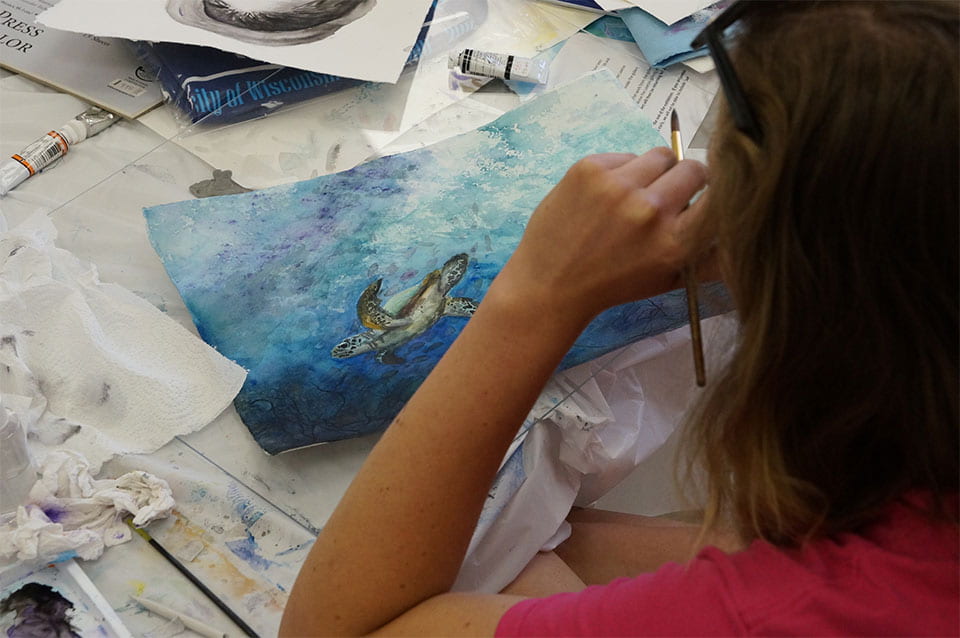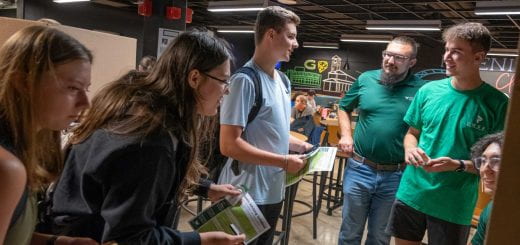UW-Green Bay: the state’s Animal Campus
John Belushi was famous as a resident of the Delta Fraternity’s “Animal House,” but if he lived in UW-Green Bay’s Residence Life apartments, he’d have lived on an animal campus.
With the more than 700 acres of woodlands, prairies, swamps and shoreline areas that make up UW-Green Bay’s Cofrin Arboretum, the campus supports an impressive variety of mammalian life.
https://www.youtube.com/watch?v=UxDoD4wHiJs&feature=emb_title
Prof. Bob Howe, Natural and Applied Sciences, had his mammalogy class study the campus mammal populations to see what’s out there, scurrying around right under more than 6,000 students’ noses.
“We have the woods, we have grassland areas, open grassland areas, we have the Niagara escarpment that provides denning sites,” Howe said. “We’re finding that even the groups that were assigned areas within Circle Drive are finding some interesting species. This has been, I think, maybe a baseline for future studies that students can pursue.”
This is the first year students have conducted mammal surveys in a systematic way, Howe said. Student groups are using a variety of means to learn what mammals are on campus, from finding tracks and droppings, to capturing still and video images of them at night with infrared cameras.
“It’s been a lot of fun. This campus is a wonderful place for animal habitat,” Howe said. “We have at least 25 species of mammals on campus and the students have found evidence for almost all of them.”
The campus mammal population ranges from the common deer, chipmunk and raccoon to the often unseen flying squirrel, gray fox and coyote. There are even a few weasels and marmots scurrying around.
Howe believes that with UW-Green Bay being the second largest and one of the most rural campuses in the UW System, it probably has the most richly diverse populations of mammals in Wisconsin, making it truly the state’s “Animal Campus.”
Video Transcript
University of Wisconsin-Green Bay
The state’s Animal CampusProf. Bob Howe
Natural and Applied Sciences
We have many different kinds of habitats here. We have the forest along Mahon Creek that is turning out to be a very rich place for different species of mammals. One of the groups found flying squirrels. We knew they were here, but they’re probably here in pretty good numbers. We have plenty of raccoons on campus, quite a few skunks, Virginia opossum, of course quite a few deer as well. We’ve been able to find even some of the more secretive species, like weasels, some of the mice…Alex Liebmann
Senior, Environmental Science and Studio Arts Majors
We’re surveying mammals through the area of UWGB. We actually are assigned different areas and depending on what you get mammals, but we’re pretty much tracking and we’re trying to get video footage of mammals.
Ben Kraft
Senior, Animal Biology Major
It’s pretty cool. I tell all my friends, I think UWGB is one of the nicest campuses as far as just the surrounding environment. You’re not stuck in the middle of a city. Some people like that. I, personally, like having nature around. I’m an animal biology major, so it kind of makes sense. It’s pretty nice that everything’s right here.Jesse Tegen
Senior, Biology Major
Being as we have a lot of different types of ground, I mean, we have anything from bogs to coniferous forests, to deciduous forests. It’s pretty well divers (on campus). You’ve got anything from larger animals like deer and coyotes to the smallest marmots and mice that you can find. It’s got a lot to offer.I didn’t think that there would be as much as there is, just because there is so much population in the area. Being as there’s so much traffic that goes through all the time, I didn’t think there’d be a lot. I figured there’d be some squirrels, maybe some deer, but I didn’t think there’d be as much of the other stuff.
Prof. Bob Howe
I guess I have to admit I’m always surprised to see thing like gray fox and coyote on campus because, again, I spend most of my life here on campus, and you don’t see those animals very often. Yet, at night they come out and in the right circumstances where few people are around, these animals show themselves and we’re able to detect them. So yeah, it’s surprising and I hope the students are surprised as well. I think it probably is a good lesson about the diversity of life. We’re talking here about big animals that are relatively easy to identify and easy to observe. Of course, we’ve got lots of invertebrates and other animals on campus that aren’t so conspicuous, but they’re here and I think it’s a bit of an oasis in the urban surroundings here as you said.








